
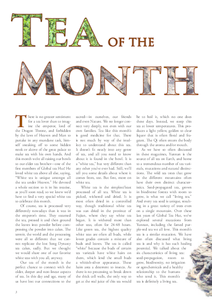 |
|

There is no greater sentiment for a tea lover than to imagine the emperor, lord of the Dragon Throne, and forbidden by the laws of Heaven and Man to partake in any mundane task, himself sneaking off to some hidden nook or alcove of the great palace to make tea with his own hands. And this month we're all raising our bowls to our elder tea brother - one of the first members of Global tea Hut! He loved white tea above all else, saying, "White tea is unique amongst all the tea under Heaven." He devoted a whole section to it in his treatise, as you'll soon read, so we knew we'd have to find a very special white tea to celebrate this month.
Of course, tea is processed very differently nowadays than it was in the emperor's time. They steamed the tea, pressed it and then ground the leaves into powder before compressing the powder into cakes. The terroir, the world and the processing were all so different that we cannot replicate the lost Song Dynasty tea cakes, sadly. But we thought we would share one of our favorite white teas with you all, anyway.
Our tea of the month is the perfect chance to connect with the older, deeper and non-linear aspects of tea. In this day and age, many of us have lost our connections to the sacred - in ourselves, our friends and even Nature. We no longer connect very deeply, not even with our own families. Tea like this month's is good medicine for that. There is not much by way of the intellect to understand about this tea. It doesn't fit neatly into any genre of tea, and all you need to know about it is found in the bowl. It is a "white tea," but very different than any other you've ever had. Still, we'll tell you some details about where it comes from, too. But first, more on white tea.
White tea is the simplest/least processed of all tea. White tea is picked, withered and dried. It is most often dried in a controlled way, though traditional white tea was sun dried in the province of Fujian, where they say white tea began. It is withered more than other teas, often for 24-48 hours. Like green tea, the highest quality white teas are often all buds, while lower grades contain a mixture of buds and leaves. The tea is called "white" because the buds of certain tea varietals have white hairs on them, which lend the small buds a whitish-silver appearance. These hairs area a deterrent to insects. As there is no processing to break down the thick cell walls, the only way to get at the real juice of this tea would be to boil it, which no one does these days. Instead, we steep this tea at lower temperatures. This produces a light yellow, golden to clear liquor that is often floral and fragrant. The Qi often enters the body through the aroma and/or mouth.
As we have so often discussed in these magazines, Yunnan is the source of all tea on Earth, and home to a tremendous number of tea varietals, mutations and natural distinctions. The wild tea trees that grow in the different mountains often have their own distinct characteristics. Seed-propagated tea, grown in biodiverse forests with room to grow, is what we call "living tea." And every tea seed is unique, resulting in a great variety of trees even on a single mountain. Over these last years of Global Tea Hut, we've explored several mutations from Yunnan, including the famed purple-red tea we all love. This month's tea is a similar mutation. We have also often discussed what living tea is and why it has such healing potential. We talked about the six characteristics of living tea: seed-propagation, room to grow, biodiversity, no irrigation or agrochemicals and a healthy relationship to the humans who tend it. This month's tea is definitely a living tea.
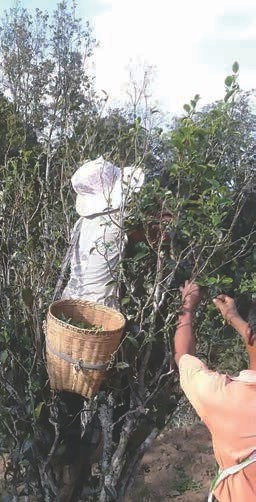
Tea is a sexual plant, which means that it is cross-pollinated. A tremendous amount of natural energy goes into the creation of a tea seed, including bugs and forest, sun and sky. Each one carries great energy within it. And no two tea seeds are alike. They will each produce a completely unique tea tree, which is why tea has done so well traveling to different climates. If you plant a thousand seeds, the chances that one of them will survive are high. Unfortunately, very little tea in the world is seed-propagated. The reason, of course, is industry and the commoditization of tea. Sadly, tea faces many of the problems that all agricultural products are haunted by. Most tea plantations use cuttings from a tree, planted to produce another. They are in essence clones. They do this to achieve a uniformity of flavor. Also, with a few hundred, or even thousands of different trees, all with different needs, the farmer would potentially have a lot more work to do.
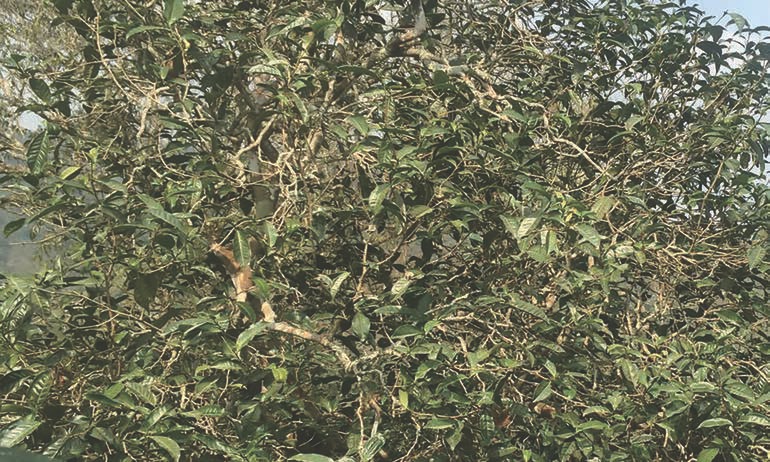
It took millennia for trees like tea to develop sexual cross-fertilization. It is also tremendously difficult for such trees to fertilize one another, since the mates cannot move towards embrace the way that animals and people can. As a result, plants have developed magnificent ways of fertilizing each other, enticing insects to pollinate them, using the wind, etc. There is a reason for all this. Carl Sagan said that the evolution from asexual to sexual reproduction on this planet was as significant as the beginning of life itself, as it allowed for all the creative power in Nature to assert itself in such myriad forms. There is something deep and powerful missing when a plant cannot cross-fertilize. The variety in Nature is magic, just as in humans. Every tree is then different. Sure, they share some similarities due to common genetic heritage and similar terroir (climate, soil, etc.), but, like people, they each have their own medicine, their own perspective, experience and wisdom.
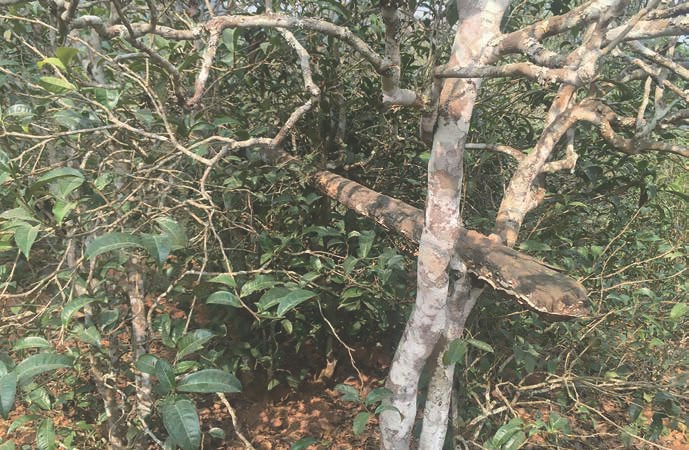
The difference in power and healing between seed-propagated and cloned tea is obvious. There are essentially two main varieties of tea trees: what are called "big leaf trees," which are the original, oldest tea trees (which we're drinking this month). They have a single trunk, grow very tall and have roots that go straight down. As tea moved north it evolved into "small leaf trees," which are more bush-like. They have many trunks and roots that grow outwards. Big leaf tea trees can live thousands of years. The oldest one we've dated is 3,500 years old! It is about seven people around (I kissed it, and once for you). There are probably older ones out there, or at least were in the past. Small leaf tea trees can live hundreds of years, and some are many centuries old. But here's the punch line: The clones on plantations typically live thirty to fifty years only. And more than a few farmers have told me that they aren't living as long anymore, sometimes as few as fifteen to twenty years.
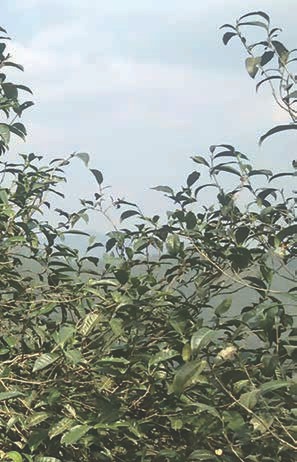
Our attempts to interfere with Nature rarely take into account all the biodiversity and infinite, immeasurable connections there are between species. We take control of an environment and monocrop it, controlling a few factors in a huge web of symmetry. As we've done this to larger and more diverse areas, our meddling has begun to have a global impact, changing the Environment (capital 'E') rather than just the places where we farm.
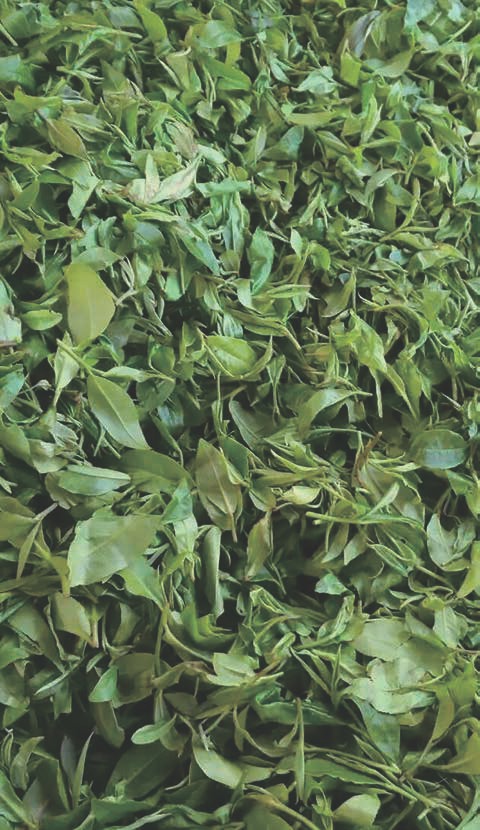
Actually, none of our creations ever come close to the power or beauty of Nature, especially since we too are one of her greater masterpieces - so all that we create also owes homage to Mother Earth, ultimately. Allowing her creative license is an important aspect of the diversity of life that sustains this planet, and any given environment. When tea is natural, and seed-propagated, every single tree is unique. Mutations arise. They each have a place and a hue, and in that way She can create more and varied medicine for us. It is presumptuous to assume that all the variety in tea is manmade, and has to do exclusively with processing, as some authors would suggest. A tremendous amount of variety is natural born, and defies our limited categories.
This month's tea is one such natural tea. It is an incredibly fantastic white tea made from wild tree leaves that have white buds. This varietal is, in fact, so unique that scientists have said that it is actually not a varietal at all, but another species called "Camellia taliensis." Some argue that it is primeval and actually pre-dates Camellia Sinensis var. Assamica. It is a naturally occurring non-hybridized varietal. Its potency lies in its unadulterated Nature. It is naturally bug repellent, and grows wild in the forests of Yunnan.
That it pre-dates the varietal of Camellia that we normally assume to be "tea" raises interesting questions about what it even means to say that something is "tea." The categories we use to separate these varietals are, of course, arbitrary. Still, this lineage of trees is unique enough that it is considered by biologists to be a separate species altogether. Curiously, it is an older cousin of the modern tea tree, but with all the force and power we love. This suggests that the lines between what this medicinal herb actually is and when it began aren't as clear as we've thought. Recently, several new varietals and/or species have been discovered and named, some of which are - like this month's tea - rediscoveries of something older than our modern tea trees.
This confuses things a bit, as perhaps they should be. On the external level, we wouldn't argue that any herb infused in water is "tea," as this is often confused in Western marketing, but on a deeper level, the fact that many of the varietals of Camellia sinensis are medicinal, including the ones scientists label as another species (Camellia taliensis), and barely distinguishable, reminds us that the forest is tea and tea is the forest! The boundaries we draw are merely semantic, used to communicate categories and concepts, and have no place in the real world - where life and energy moves throughout all species, and from the so-called "inorganic" to the "organic," as well. The sun and moon, rocks and waters flow powerfully through these tea leaves.
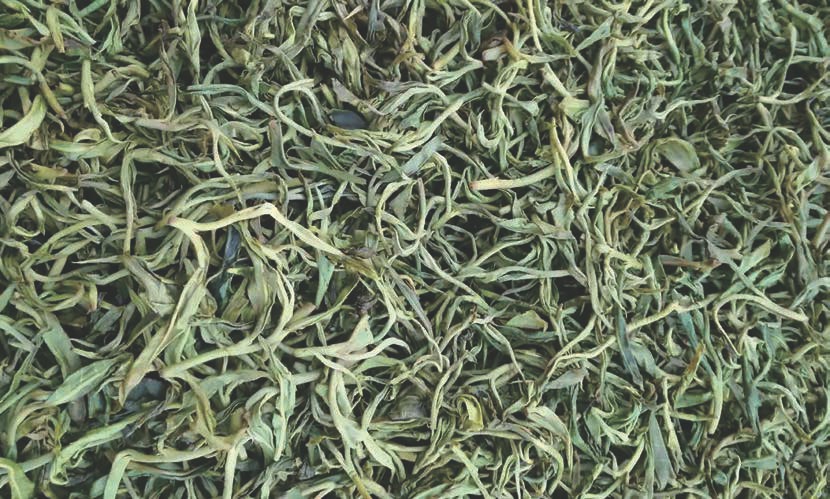
Our tea of the month comes from Daqing village in Jinggu, which is about 1600 meters above sea level. "Moonlight White (Yue Guang Bai)" is a unique white tea that lies somewhere between a white and red tea, depending on how long it is withered by the farmers and then how long it is aged after drying. They say that this tea was once withered under the moon, which is why it is named thus, though these days that is more of a colorful tale. Our tea was processed in autumn, when the moon is at its fullest, and since it withered more - most likely overnight - though not outdoors, it is, in its own way, connected to the moon. The extra withering lends this tea a darker, redder liquor. Our tea is truly somewhere between a red and white tea.
This white tea is richer than almost any other white tea we have experienced. This is because it comes from old-growth, large-leaf trees and is withered longer. The trees have natural, white buds, but the tea is composed of leaves and buds both, lending it a greater depth and more complex body. The large-leaf tea doesn't wither and dry the way small-leaf white tea does, whether Silver Needle (only bud) or Bai Mu Dan, which has leaves like our tea. In general, when discussing smallleaf white tea from Fuding, Fujian, all-bud tea is much higher quality; but we like the energy the leaves add to this Yunnanese white tea. It is strong and earthy, yet somehow spacy and celestial.
Moonlight White is gorgeously sweet, like dew. It tastes to us the way flowers must taste to hummingbirds. Some sips are fruity and the next are flowery and musky. It is a very deep and complex tea, especially for a white tea. White teas are rarely this rich, either in the mouth or the body - for make no mistake, Moonlight White is also deep and transformative. It is the perfect tea to mark the change in weather to the warmer part of the year. Be sure to drink it outdoors if you can, and raise a bowl to the emperor Huizong!
Is the giant moon really so silvery-white in my bowl?
In the dead of winter, it is hard to imagine putting on a t-shirt and heading outside. Similarly, I don't even think about drinking a light tea in the colder months. In the winter, you forget why you love light teas. Then, like when that first day comes and you head outside with a t-shirt on in spring, you remember. You feel freedom, a lightness and a connection to the season. The sun warms you and the breeze refreshes you. Even smelling the dry leaf of this tea gave me this sensation. Light pervaded my experience while drinking this tea. Both the sensation of lightness and the experience of light, spreading outwards from my chest. This tea feels like spring.
Moonlight White is so very patient, offering us infusion after infusion of this beautiful golden elixir! The dark and white leaves compressed in the cake, to me, resembled a feather falling in the night, caught in a spring wind and captured in flashes by the light of the moon. The name and the color of the leaves also reminded me that even when we find ourselves in a dark place, there is always some moon or starlight shining through. In general, while drinking this tea, I felt refreshed, uplifted and cleared out like that feeling after a good spring cleaning.
The liquor of the Tea is a very beautiful yellow color, golden and shiny. It is light and clear in texture. The color is the attractive yellow of a summer sunset that shines on a rice field, illuminating the golden harvest. The Tea flavor has a special spice, similar to the Ruby Red peppermint taste. The special taste is cooling, and this cooling in this weather helps the humidity to leave the body. It quenches the thirst. It is a fresh Tea.
I was surprised that, to my palate at least, it did not taste the same as it smelled. Each sip coated my mouth fully; even after I swallowed, there was a feeling of fullness and coolness. With each serving, She evolved, becoming more mature and complex. She retained Her flavor, still giving; She became softer on the palate. Towards the end, the faint taste settles in the pores of my tongue, and at the back of my mouth.

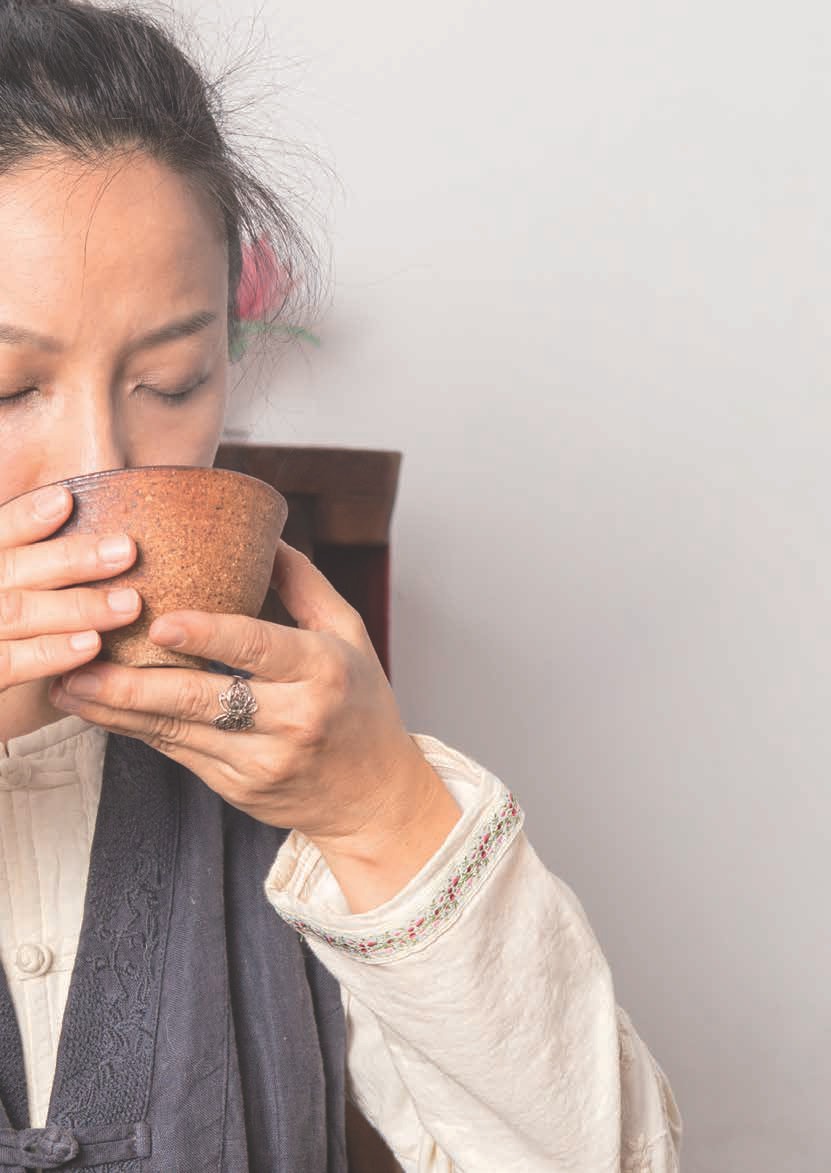
Moonlight White is a very forgiving tea. It is difficult to misbrew it. Try making this tea in a sidehandle pot if you can. You will want to use the best of spring water, as any impurities in the water will make a huge difference in this lighter, more sensitive tea. Green, white and yellow teas all taste as much of the water they are brewed in as they do the leaf. Richer teas can add depth with a tetsubin's flavors, but a tea like this will shine with the pure, uplifted water brewed in a silver ginbin, for example. But use the best kettle you have, and try your best to source some extra special water for this month's tea.
There is no easier, simpler way to improve your tea or your life than water. Water is the medium of tea, as it is the medium of life. Since ancient times it has been known as the "Mother of tea." There is an old Chinese saying that a great tea is ruined by poor water, but an average tea can be made great with special water.
There are some general principals we can use to navigate our exploration for good water. For example, it is always better if you can gather water yourself from Nature, rather than buy it in a bottle. The act of fetching water puts a bit of your energy into your tea. It makes it real, and demands respect. Every week we hike into the mountains to gather the week's water for the Center. This ritual is transcendent, and the tea on that day is always some of the best, lit up with the morning's stroll through the mountains and the love for our favorite water. Guests are always able to taste the difference drinking such tea with such fresh spring water.